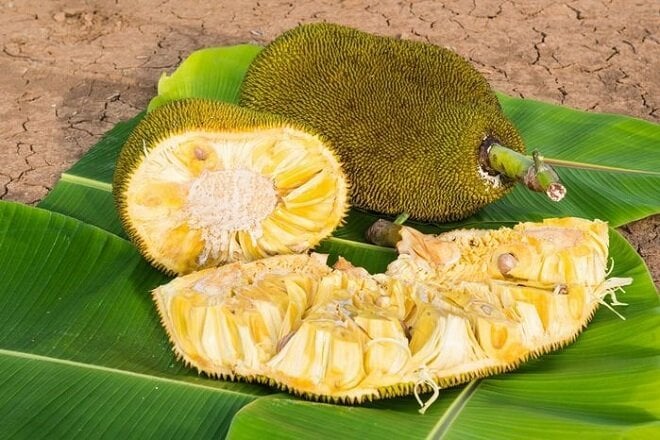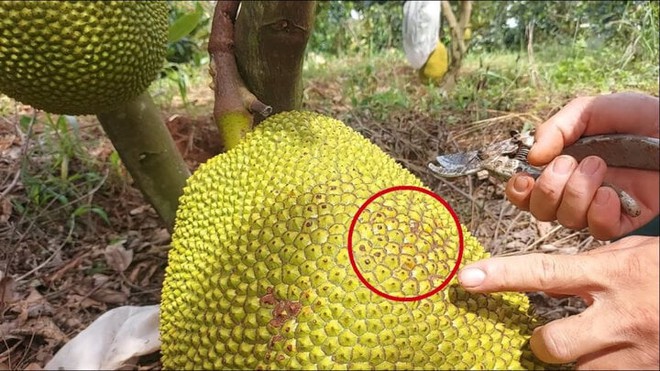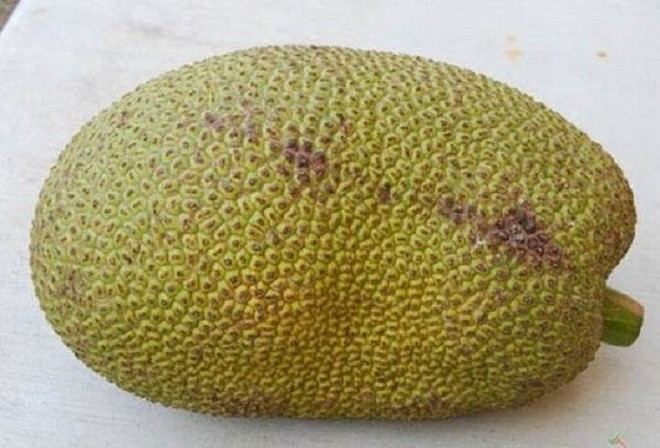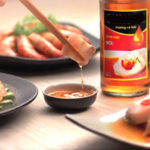It’s not easy to buy ripe jackfruit from the tree these days. The demand for long-distance preservation and transportation, multi-layer intermediaries, and multi-day sales mean that a significant proportion of jackfruit in the market is harvested early and ripened simultaneously.
Tips for choosing ripe jackfruit
Ripe jackfruit from the tree not only has a more appealing flavor but also gives users peace of mind about its quality and food hygiene and safety. Here are some tips for choosing ripe jackfruit with an alluring aroma and intense sweetness:

By applying these tips, you can easily find the most delicious jackfruit. (Photo: Fitterfly)
Here are some tips for choosing ripe jackfruit with an alluring aroma to help you find the most delicious fruit:
Assess the aroma
One of the most noticeable signs of ripe jackfruit is its distinctive and appealing fragrance. Ripe jackfruit usually has a strong, alluring aroma that can be sensed from a distance. If the jackfruit has a rich, natural aroma without any harsh or strange smells, it’s a sign that it has ripened naturally.
If you don’t perceive a distinct aroma even when you’re close to the fruit, or if there’s no aroma at all, it indicates that the jackfruit is unripe, has been forced to ripen, or has been soaked in chemicals.
Observe the rind

Ripe jackfruit usually has a bright yellow rind, with fully bloomed, round-tipped, and evenly spaced spines. (Photo: Rest less)
The rind is an essential factor in determining the ripeness of the fruit. Ripe jackfruit typically has a bright yellow rind, not too dark. The spines on the rind are also softer and not sharp. When gently pressed, the rind feels resilient, neither too hard nor too soft.
– Thai jackfruit: The rind of ripe Thai jackfruit is bright yellow, with small and evenly spaced spines. When gently pressed, you’ll feel its softness and resilience.
– Tố Nữ jackfruit: The rind of ripe Tố Nữ jackfruit is orange-yellow, with sparse and soft spines. Tố Nữ jackfruit usually has a more intense aroma than other varieties.
Firmness of the fruit
The firmness of the jackfruit is another critical factor in determining its ripeness. Ripe jackfruit has a moderate firmness, neither too hard nor too soft. When gently pressed, you’ll feel a slight resilience, and the rind won’t sink deeply.
Listen to the sound
A simple yet effective tip for choosing ripe jackfruit is to gently tap the fruit and listen to the sound it makes. If you hear a dull, muffled sound, it indicates that the jackfruit is ripe and ready to eat. On the other hand, if the sound is loud, clear, and crisp, the jackfruit may not be ripe or may be unevenly ripe.
Observe the stem
Another fairly accurate tip for choosing ripe jackfruit is to look at its stem. Ripe jackfruit usually has a fresh, green stem that hasn’t wilted or dried out. A fresh stem indicates that the jackfruit was harvested at the right time and still retains its freshness and quality.
Observe the shape and size

Ripe jackfruit usually has a moderate size, a round and symmetrical shape, and no abnormal dents or protrusions. (Photo: Health shots)
Ripe jackfruit typically has a moderate size, neither too big nor too small. The shape of the fruit is round and symmetrical, with no distortions or abnormal dents. Fruits with many bumps and dents usually have fewer segments, more fiber, and a less appealing flavor.
Avoid bruised or discolored fruit
Jackfruit with bruises or discoloration may not be of good quality, as it could indicate that the fruit has been damaged during transportation or infested with pests and diseases. Such fruits may be rotten on the inside.






































